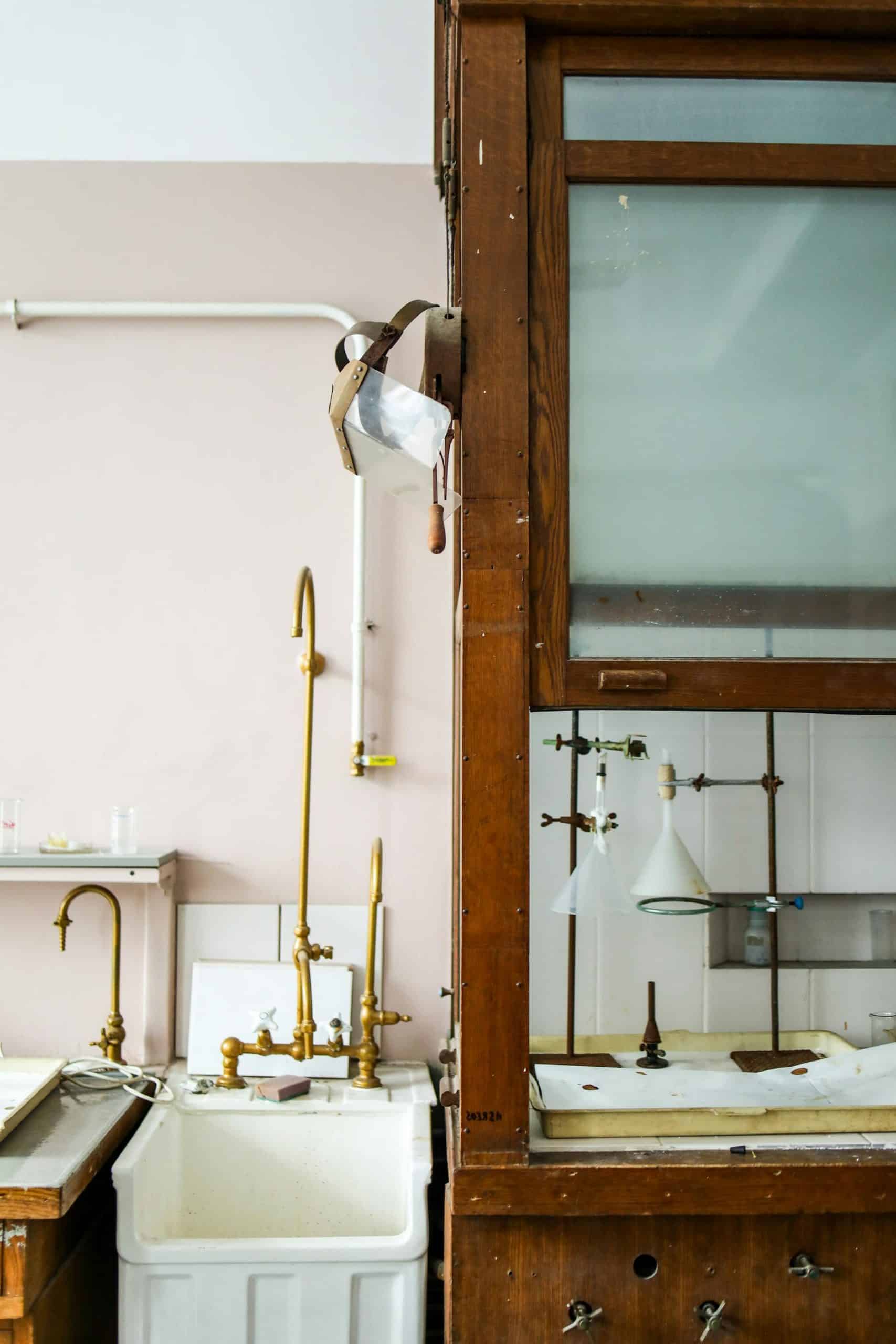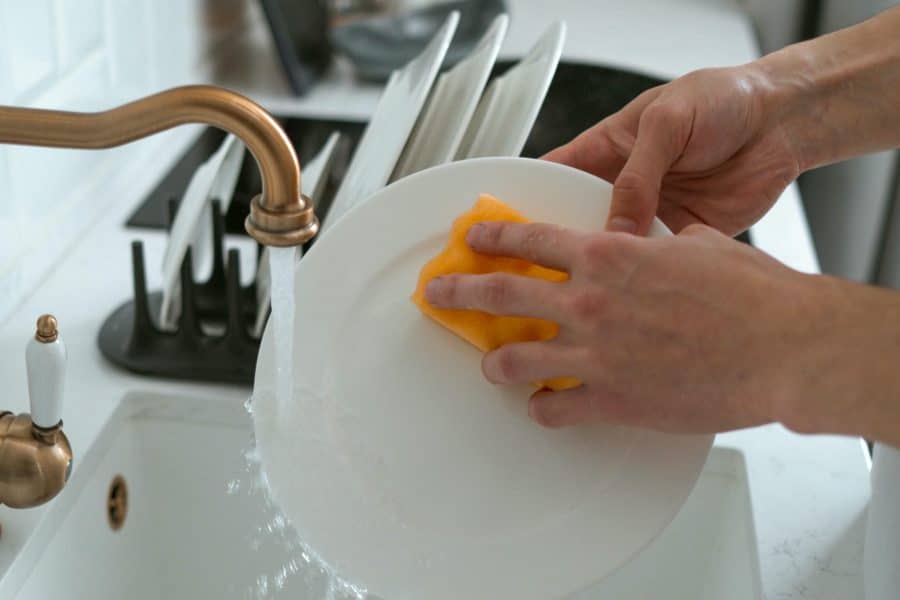Scale in pipes is a common but often overlooked problem that can affect your home’s plumbing system. Understanding scale and how to prevent it can save you from costly repairs.
Keep reading for 5 things to know about scale in your pipes, but first, let’s cover some basics.
Click to: Jump ahead to the list of 5.
What is scale?
Scale is a hard, crusty mineral deposit.
It forms inside pipes when dissolved minerals in the water, mainly calcium and magnesium, solidify and stick to the interior walls.
Scale can also cover faucets and fixtures when leaks allow mineral-rich water to drip and evaporate.
Scale vs. sludge
While we’re defining scale, it’s worth pointing out that scale and sludge are not the same thing.
Although hard water can contribute to sludge, sludge is primarily caused by debris and everyday products flowing through pipes.
What does scale in pipes look like?
Scale typically appears as a white or grayish, rock-like substance inside pipes. When pipes are cut open, this buildup can be seen as thick, chalky rings that narrow the pipe’s diameter or as chalky chunks that break loose.
On visible surfaces like faucets and showerheads, scale shows up as a crusty, whitish deposit that’s rough to the touch and difficult to remove.
The connection between corrosion and scale
When pipes corrode, one of two things happens: either the metal dissolves into your water and flushes away, or it reacts with certain minerals in the water to form scale buildup.
Water chemistry plays a crucial role in the latter case. As water heats up, dissolved calcium and magnesium naturally separate from the water. Meanwhile, the pipe, which is corroding, is actively creating reactive metal particles.
Since both processes are happening at once, this allows the minerals and metal particles to combine and form new compounds, i.e., scale.
If left unchecked, corroding pipes can deteriorate to the point of failure or develop so much scale that the pipe gets blocked.
How quickly does scale form?
It depends on where you live. In areas with hard water, scale can start to form within months, especially in hot water pipes.
Las Vegas is known for having very hard water, which means scale formation happens more rapidly than in areas with softer water.
However, a noticeable buildup can still take a few years.
Now, if you notice black residue in your pipes, this isn’t scale; it’s a biofilm that can form in just a few months from soap scum, toothpaste, shaving cream, etc.
5 things to know about scale buildup in pipes
1. Scale buildup can sneak up on homeowners
While in severe cases, scale can build up so much that it restricts your pipe’s water flow, usually, what ends up happening is a gradual decrease in water pressure that you might not notice right away.
This is more of a concern if you live in an old home and haven’t gotten around to replacing outdated plumbing, which is often quite susceptible to scale buildup.
The way to counteract the sneaky nature of scale buildup is to, one, test your water quality and, two, implement preventive measures. We’ll talk more about these later in the post.
2. Scale buildup can damage your appliances
Scale buildup doesn’t just affect your pipes; it can also damage your household appliances. Water heaters are especially vulnerable since scale acts as an insulator that forces the unit to work harder to heat the water.
In dishwashers, the spray arms can get clogged with scale. As a result, you might notice spotty dishes, cloudy glassware, and even leftover food debris.
In washing machines, scale can accumulate on internal components that come in contact with water. Moreover, hard water can interfere with detergents.
3. Scale can block your bathroom drains
While most people think of scale as forming inside pipes, it can also build up in your bathroom drains. Shower drains and bathroom sinks are vulnerable because soap scum and minerals combine to create stubborn blockages.
Speaking of bathrooms, did you know that scale can also build up on shower glass? This issue can usually be solved with a squeegee. However, if the scale has built up too much, you might need to use a glass cleaner.
4. You can test your water’s scale-forming potential
There are various test kits you can buy online to test your water for scale potential. You can also hire a water quality expert to test your water for you.
If you go the test kit route, keep in mind that many test kits measure hardness levels, which directly relate to scale potential but don’t necessarily tell you how much scale is already in your pipes.
For the most reliable results, you can hire a water quality expert to perform comprehensive testing.
5. You can remove existing scale with the right system
Water treatment systems can be installed at the point of entry or point of use. Point-of-entry systems are recommended if you live in an area with hard water, like Las Vegas.
Solutions vary, but it’s worth noting that newer technologies are able to convert hard water minerals into harmless particles that won’t stick to your pipes.
For example, our Scale Prep’s SP3 Anti-Scale Media removes existing scale by converting calcium and magnesium minerals into harmless “Nano” particles. These nano particles flow through plumbing systems without adhering to pipes, fixtures, valves, or heating elements, resulting in 99% scale prevention and removal.
The Scale Prep’s SP3 Anti-Scale Media is an excellent solution that protects against scale formation and eliminates existing scale from pipes and heat exchange surfaces. You can learn more about this on our Scale Control page.
Prevent Scale Buildup in Your Pipes
Hiring a professional to descale your pipes is expensive. This is because professional descaling often requires harsh chemicals or specialized equipment to break down years of mineral deposits. Some pipes may even need to be replaced entirely if the scale buildup is severe.
The good news is you can prevent scale buildup before it becomes a costly issue. Solutions are readily available. Contact Water Quality of Las Vegas to find out how we can help you.





